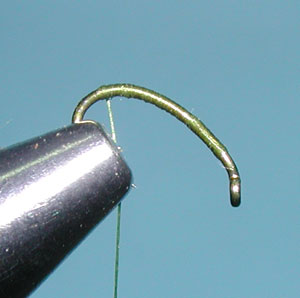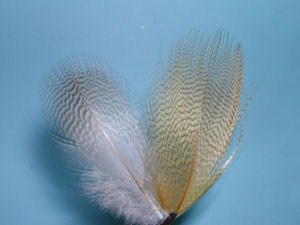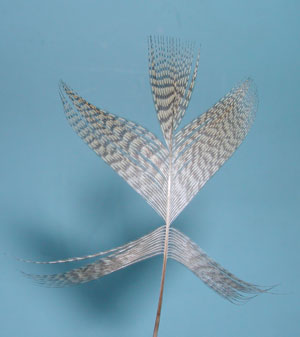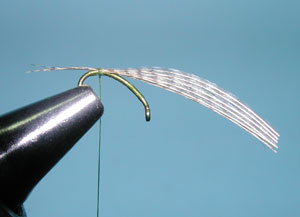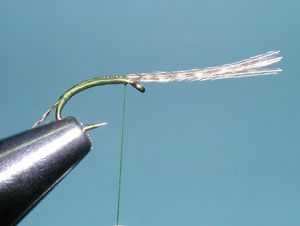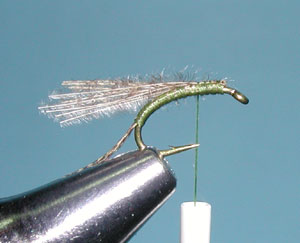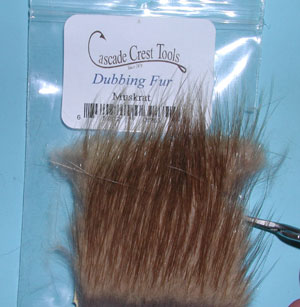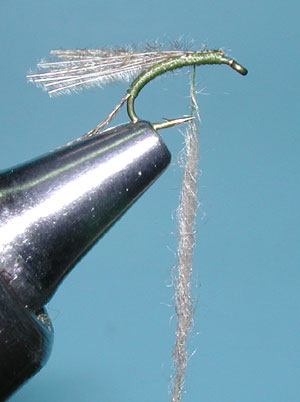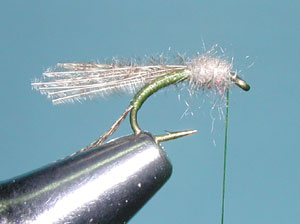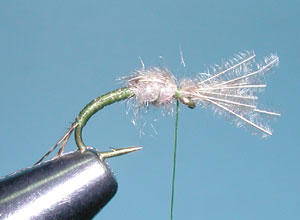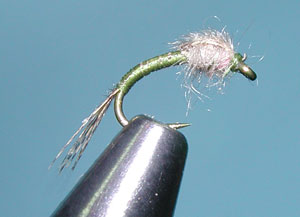WD-40 – a style for genuine wood duck
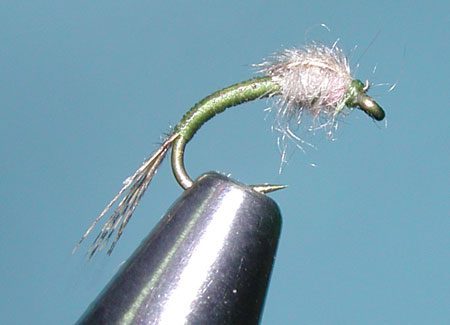
WD-40
Tying Instructions
| Materials
to Order Material, click the link |
|
|---|---|
| Hook | TMC 2487 Size 16-20 |
| Thread | Olive 8/0 Uni-thread |
| Head | Olive 8/0 Uni-thread |
| Body | Olive 8/0 Uni-thread |
| Tail | Dyed Mallard Flank, Wood Duck |
| Thorax | Muskrat |
| Wingcase | Dyed Mallard Flank, Wood Duck |
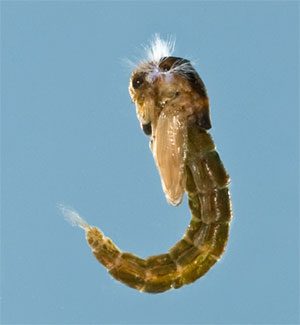
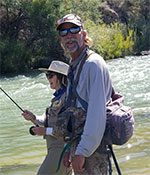
Mark Engler
WD-40
The WD-40 pattern was first tied in 1982 for Colorado’s Frying Pan River, by Mark Engler. Mark guides for Duranglers Fly Shop out of Durango, Colorado. The WD-40 imitates the larger midges that get trapped in the shuck for extended periods. It is more a style of midge emerger than a specific pattern.
WD = Wood Duck
Thread and dubbing can be chosen to match the color of any natural, the most popular colors being Olive, Black, Dark Brown, Gray, and Rust. The black coloration is preferred on dark days while the Gray is preferred for bright, sunny days. The WD stands for Lemon “Wood Duck”, of which each pattern uses this material for the tail and wingcase.
Thread Body and Dubbed Thorax
The original WD-40 had an olive thread body and a muskrat thorax. There are some substitutions in which the Lemon Wood Duck wingcase has been replaced by Krystal Flash or Razor Foam but this would really make it something other than a WD, wouldn’t it? Another interesting variation is to substitute the dubbed abdomen with a glass bead or two. You can also easily incorporate legs to the pattern by utilizing the butt ends of the wingcase rather than trimming them flush to the shank. The WD40 is often tied in sizes 18-24 for tailwaters such as the San Juan river, however, within our Sierra Nevada size ranges from 16-20.
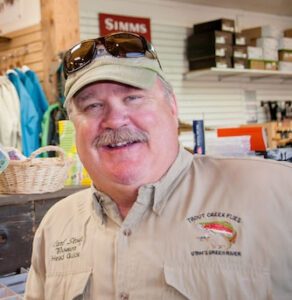
Carl Stout
A recent variation is theWD-50designed by Carl Stout. Carl takes the pupa one step further with a wing that is busting out of it’s shuck to become an emerger. The wing is often a dyed Mallard Flank in Gray, Olive, Wine, or Brown. The tail continues to be tied with Lemon Wood Duck or Mallard dyed Wood Duck and the wingcase is a Pearlescent Flat Tinsel.
Dyed Mallard Flank, Woodduck
After 2021, actual Lemon Wood Duck has been difficult to find and you will need to substitute Dyed Mallard Flank, woodduck. Hopefully, the material will be available once more as the Dyed Mallard flank does not have the distinctive barring that the actual Woodduck possess.
Variations
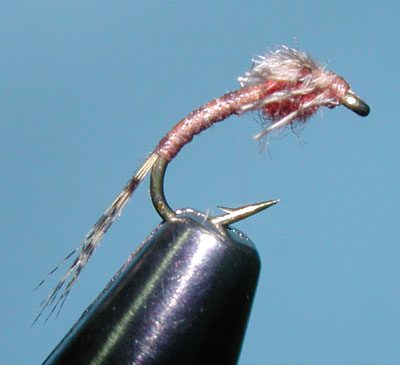
Brown WD-40 w/ legs
| Hook | TMC 2487 Size 16-20 |
| Thread | Rusty Brown 8/0 Uni-thread |
| Head | Rusty Brown 8/0 Uni-thread |
| Body | Rusty Brown 8/0 Uni-thread |
| Tail | Dyed Mallard Flank, Wood Duck |
| Thorax | Brown Superfine |
| Wingcase | Dyed Mallard Flank, Wood Duck |
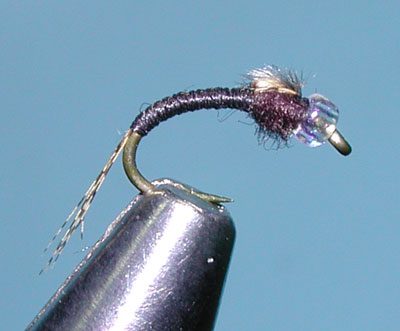
BH Black WD-40
| Hook | TMC 2487 Size 16-20 |
| Thread | Black 8/0 Uni-thread |
| Head | Black 8/0 Uni-thread |
| Body | Black 8/0 Uni-thread |
| Tail | Dyed Mallard Flank, Wood Duck |
| Thorax | Black Superfine |
| Wingcase | Dyed Mallard Flank, Wood Duck |
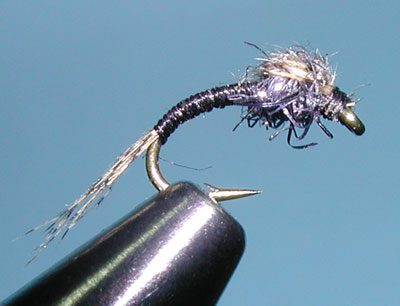
Black Flashy WD-40
| Hook | TMC 2487 Size 16-20 |
| Thread | Black 8/0 Uni-thread |
| Head | Black 8/0 Uni-thread |
| Body | Black 8/0 Uni-thread |
| Tail | Dyed Mallard Flank, Wood Duck |
| Thorax | Gunmetal Wing N' Flash |
| Wingcase | Dyed Mallard Flank, Wood Duck |
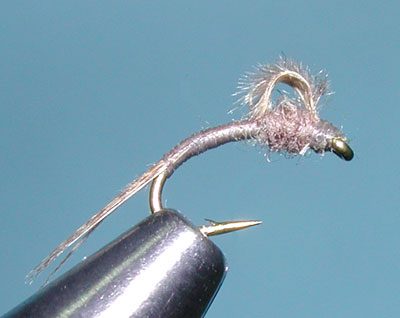
Loop Wing WD-40
| Hook | TMC 2487 Size 16-20 |
| Thread | Gray 8/0 Uni-thread |
| Head | Gray 8/0 Uni-thread |
| Body | Gray 8/0 Uni-thread |
| Tail | Dyed Mallard Flank, Wood Duck |
| Thorax | Gray Superfine |
| Wingcase | Dyed Mallard Flank, Wood Duck |

Olive Green Bead WD-40
| Hook | TMC 2487 Size 16-20 |
| Thread | Olive 8/0 Uni-thread |
| Head | Olive 8/0 Uni-thread |
| Body | Olive 8/0 Uni-thread |
| Tail | Dyed Mallard Flank, Wood Duck |
| Thorax | Green Glass Bead |
| Wingcase | Dyed Mallard Flank, Wood Duck |
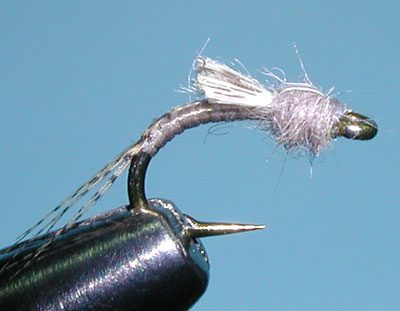
Gray WD-50
| Hook | TMC 2487 Size 16-20 |
| Thread | Gray 8/0 Uni-thread |
| Body | Gray 8/0 Uni-thread |
| Tail | Dyed Mallard Flank, Wood Duck |
| Thorax | Gray Hare's Ear |
| Wingcase | Flat Mylar Tinsel, Pearlsecent |
| Wingstub | Dyed Mallard Flank, Wood Duck |
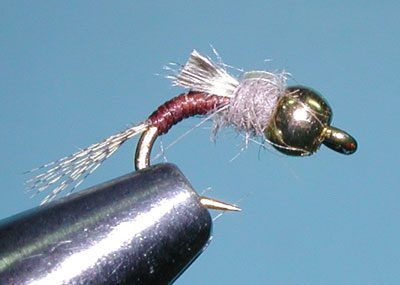
Tungsten Brown WD-50
| Hook | TMC 2487 Size 16-20 |
| Thread | Dark Brown 8/0 Uni-thread |
| Head | Tungsten Gold Bead |
| Body | Dark Brown 8/0 Uni-thread |
| Tail | Dyed Mallard Flank, Wood Duck |
| Thorax | Gray Hare's Ear |
| Wingcase | Flat Mylar Tinsel, Pearlsecent |
| Wingstub | Dyed Mallard Flank, Wood Duck |

